- Blog
- Discount Strategy 101: To Discount or Not to Discount?
Discount Strategy 101: To Discount or Not to Discount?
-
Csaba Zajdo
- Ecommerce
- 6 min read
Table of Contents
Did you know that offering discounts is one of the most popular pricing strategies employed by 99% of retailers?
And 62% of U.S. shoppers say they look for promo codes and coupons when shopping online.
If used correctly, discount strategies can help you to:
- Increase customer acquisition
- Improve cart value
- Boost retention rates
- Gain momentum for new product launches
- Better track attribution
- Bring several other benefits
In fact, personalized discounts affect 52% of the decisions that consumers make when it’s time to hit the “buy” button.
Let’s examine why discount pricing works so well in the first place.
The psychology behind discounts
There are multiple psychological factors that explain why discount pricing strategies are so effective.
So let’s learn more about them!
1. Make shoppers smarter
When customers get a “great deal,” they tend to celebrate that they were resourceful and slick—it’s almost like beating the system.
Hence, those who got a huge discount on a product or service will feel smarter than others who paid the full amount.
2. Anchor the value
Many marketers are familiar with the concept of anchoring bias. To use this bias, marketers can “anchor” the original, higher price as the product’s true value.
Then, when that price drops, consumers will perceive the product as more valuable than what the sticker says.
3. Make shoppers happy
Scientific studies have shown that people who used a $10 off voucher experienced a 38% increase in oxytocin levels and were 11% happier than those who paid full price.
So this could be an explanation of why 59% of online shoppers look for discounts before making online purchases. It can also be why 64% of shoppers refuse to make any purchases at all until they have a discount.
The potential dangers of discounting
Discount pricing isn’t all sunshine and rainbows, though.
To create the best possible discount pricing strategy for your brand, you need to be aware of the potential downfalls of using discounts.
Let’s take a look at these potential dangers.
1. Reduced profitability
Smaller profit margins are the most obvious “side effects” of discounting.
Should you focus on maximizing your overall revenue by increasing sales through discounting? Or should you try to increase the profit margin of each sale?
This is a tricky question that lots of economists have been arguing about.
2. Classical conditioning
Classical conditioning is when shoppers can recognize a pattern and depend on a reliable outcome. This means that if you offer discount codes too frequently, your customers can get used to it and wait to buy from you until there’s a discount.
Continuous discounts could end up looking like your store’s been having a “Going out of business” sale for years. You could lose credibility, and your customers won’t feel any sense of urgency to respond to your limited-time offers (since they know that another will be coming soon).
3. Damaged brand image
People buy luxury products because they’re high quality (or at least, they’re perceived to be high quality). And price has a direct impact on your product’s perceived value. For example, a $399 purse can seem “inferior” to a similar product that costs $600.
Discounts can lower the perceived quality of your goods (though, as we discussed above, it can also improve the perceived value). That’s why some designer brands (like Hermes and Louis Vuitton) never go on sale.
4. Over-discounting
The microeconomic principle of price elasticity states that when a product’s price goes down, the demand goes up. This is why discounting can lead to higher sales—there’s more demand for the lower-priced product.
However, this is only true up to a certain point.
Once your discount becomes too large, there won’t be any additional increase in demand (i.e. the demand for your product will plateau).
10 types of discounts
The four dangers discussed above don’t mean you should avoid offering discounts, but it’s important to manage these risks with a smart discount pricing strategy.
Here, we’ll discuss 10 types of discounts and how they can benefit your online store.
1. First-time customer discount
Offering a generic discount (like 10% off) to first-time customers is the most popular type of discount.
You can require new visitors to subscribe to your newsletter list to access the discount. Once they convert and sign up, you successfully gain a new lead and potential customer.
Marketers usually display first-time customer discounts on a welcome popup, but showing the offer to cart abandoners as well can reinforce the message.
Check out how The Oodie uses a welcome popup to promote its discount for new customers.
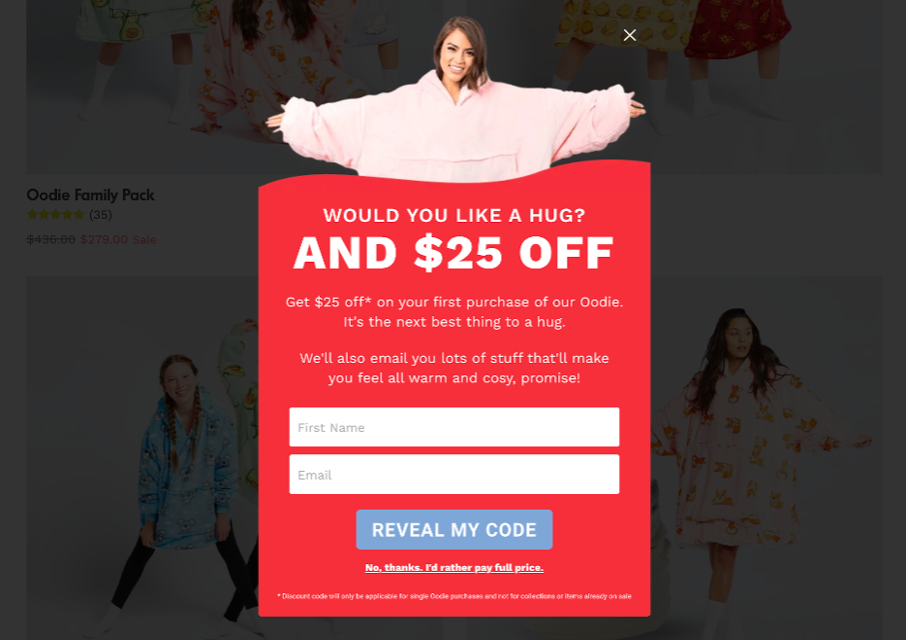
2. Promotional discounts
Similar to the first type, these are also generic discounts (“20% off” or “50% off”) which motivate customers to buy now. The only difference is that they can be used by returning customers as well.
Promotional discounts are available for a limited time and are usually tied to a seasonal event like Valentine’s Day or Black Friday. This helps to increase the sense of urgency and encourages visitors to buy now (and take advantage of the discount) rather than later (paying full price).
The example below shows how Obvi promoted its Black Friday discount to site abandoners.
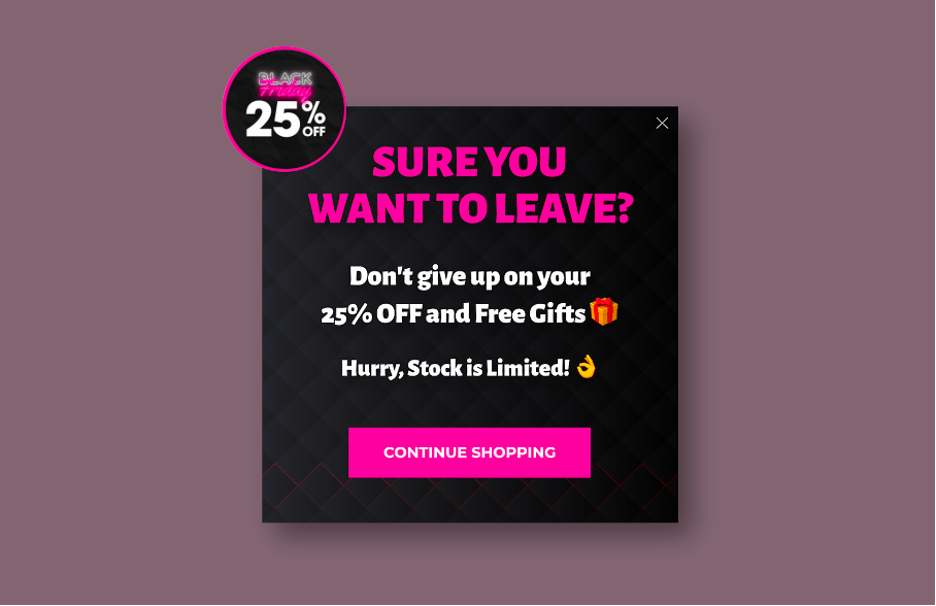
You also have the option to limit promotional discounts to specific user segments (e.g. 10% off for VIP users) or only for some product lines (e.g. 10% off on all knitwear).
3. Volume discount
Volume discounts tie the level of discount to the amount that a customer buys. Effectively, it’s a price reduction for bulk purchasers.
This type of discount encourages customers to buy more—and increases your AOV (average order value).
Here’s an example from Indigo Living:

And here’s another example from Beloved Shirts:
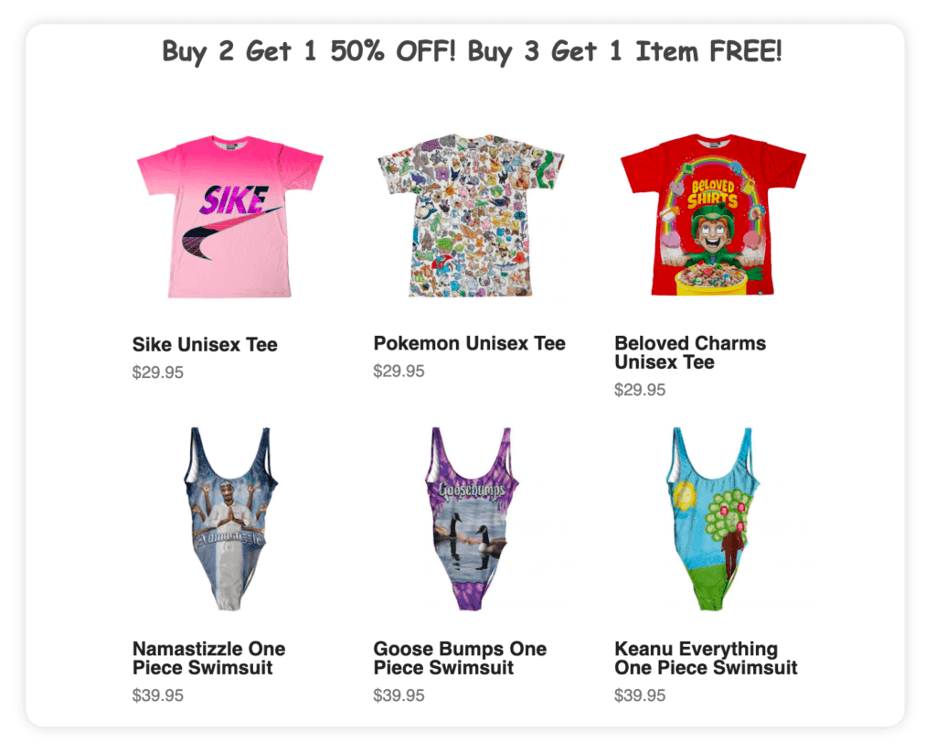
4. Buy one, get one XX% off (BOGO)
This type of discount encourages people to buy more items like two of the same item, or any two items.
Sometimes, the second item is free, but it’s more common for a BOGO deal to offer the second item at a reduced price. For example, “Buy One, Get One Half Off” is a very common deal.
Research indicates that 77% of people would select a BOGO discount instead of a generic percentage-off discount.
Here are a couple examples:
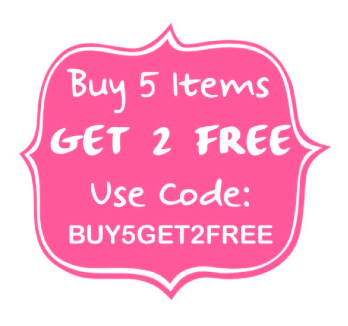
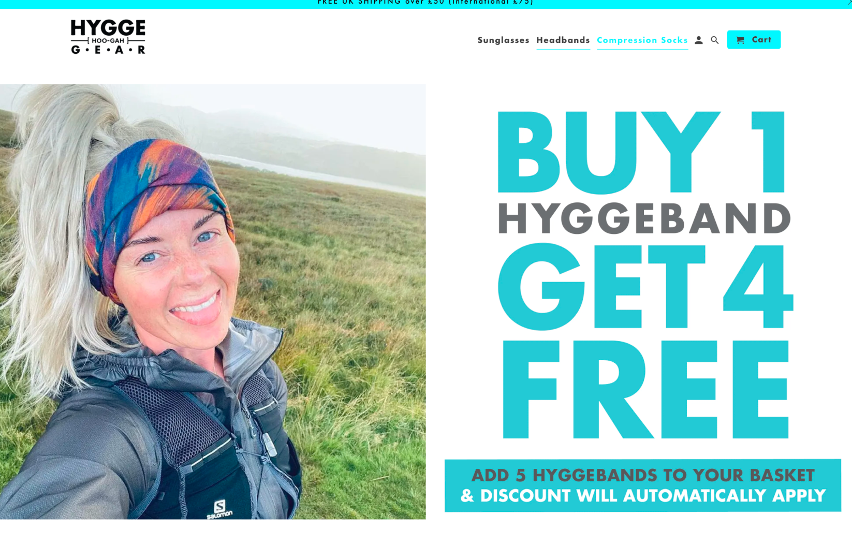
5. Loyalty-based discounts
Loyalty discounts are offered to repeat customers. This is usually part of a “loyalty program” where customers can collect points and rewards from every purchase.
Another approach to loyalty-based discounts is offering a discount right after the purchase. This motivates customers to come back to your store.
Here’s an example from Urban Outfitters’ loyalty program. They offer a £5 discount after customers reach 100 points.
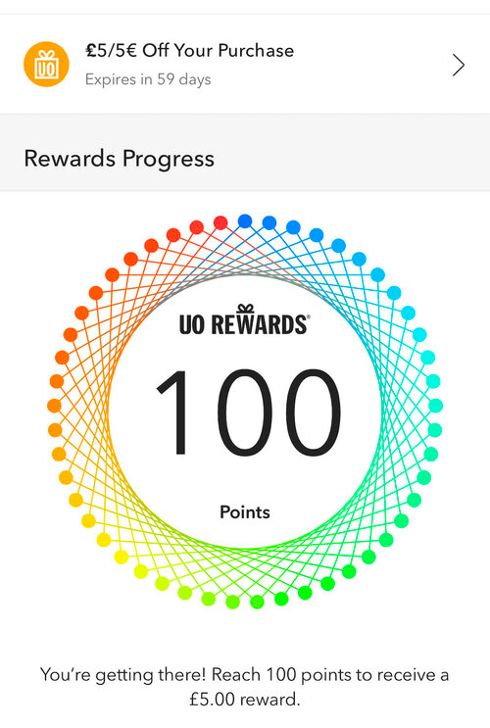
6. Free gifts with purchase
Rather than offering a monetary discount, you can sweeten the deal by offering customers a free gift of lesser value if they buy your main product.
In the example below, Blendjet gave their customers 3 free “JetPacks” when they bought a BlendJet.
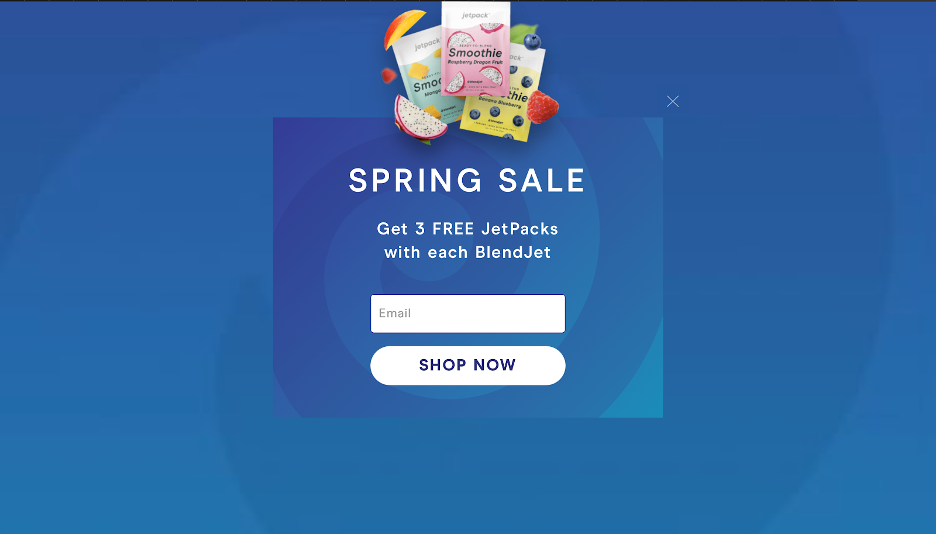
You can also let customers choose their gift from multiple options, like the example below.
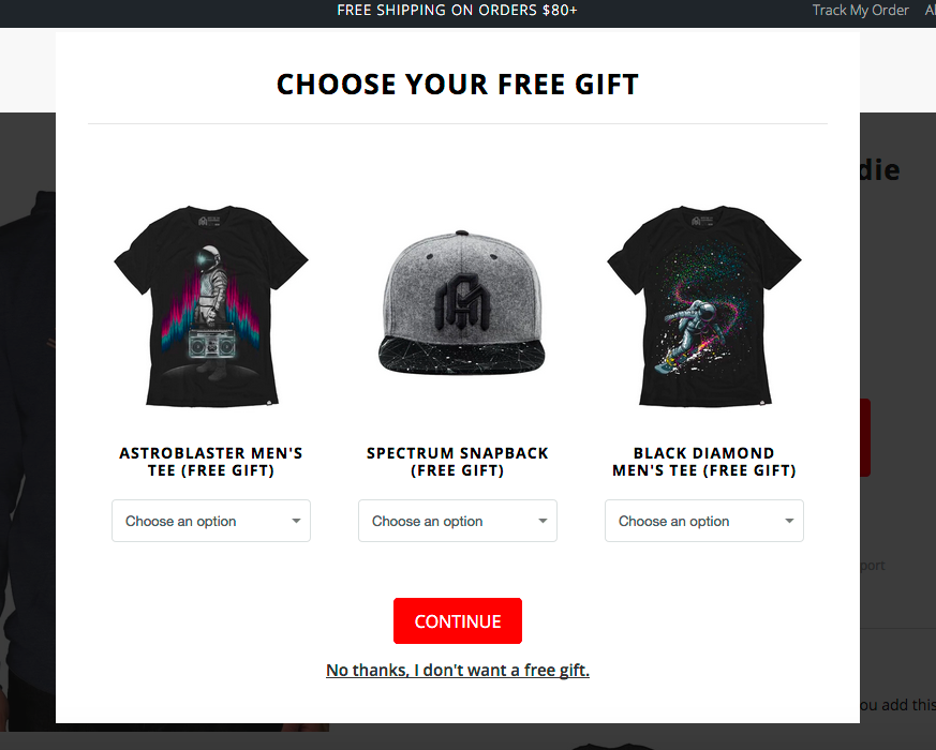
7. Flash sales
Flash sales only last for a short time period—from 24 hours to a few days. Short-lived sales work well because customers feel a sense of urgency to act now.
According to stats, this type of discount generates an average of a 35% lift in transaction rates.
LOFT promotes their flash sale like this:
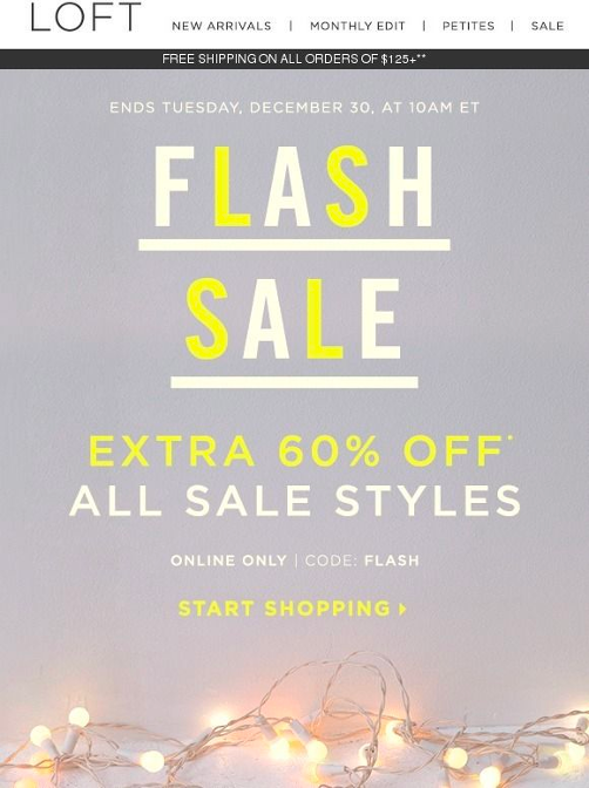
8. Free shipping discounts
Customers love when online stores lower (or even eliminate) shipping costs.
Running a “Free Shipping Sale” gets out in front of one of the main reasons for cart abandonment: unexpected shipping costs.
And you can even increase the average order value by adding a “minimum purchase amount” threshold.
Take a look at how the popup below promotes a free shipping discount:
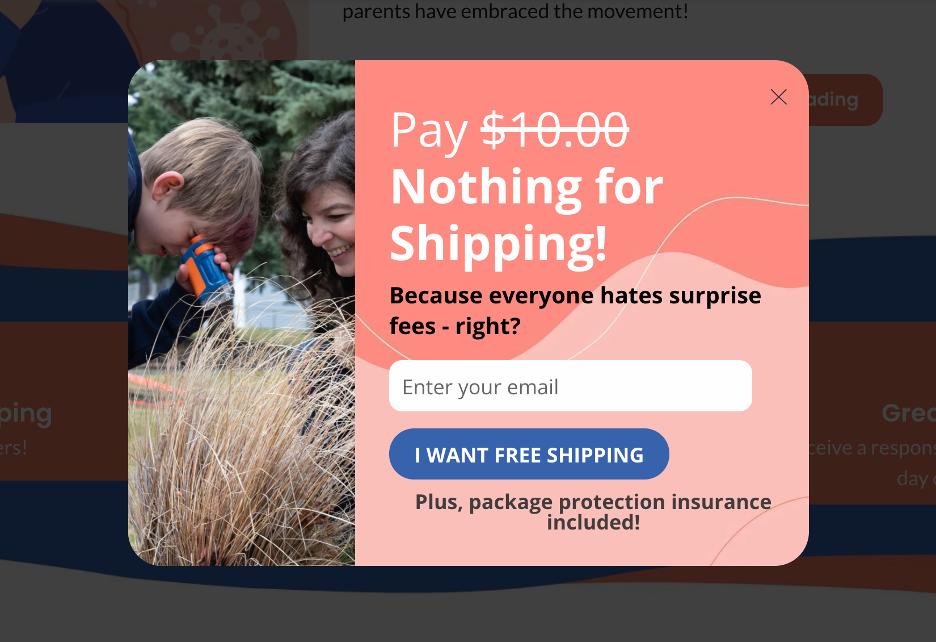
9. Buy one, give one
A “buy one, give one” is when companies donate the same item you purchased to a person in need.
These offers create both positive PR and carry a positive social impact.
Warby Parker’s “buy one, give one” offer on eyeglasses is a perfect example of this type of discount.
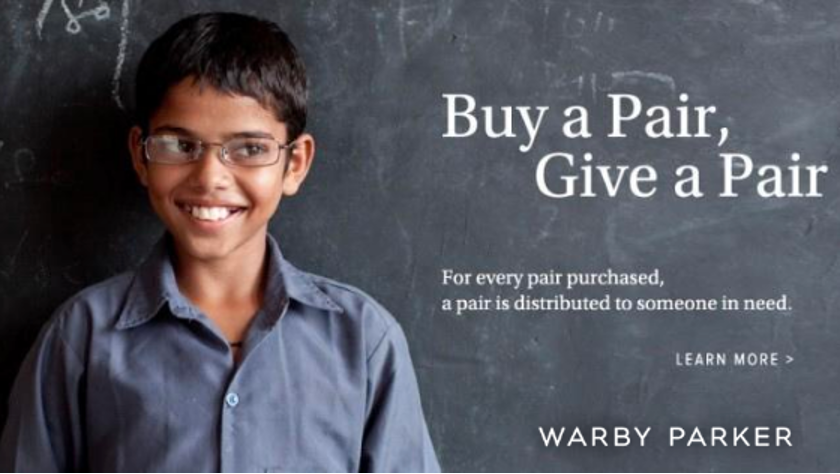
Another common way of providing social value with each purchase is tree planting campaigns, like the example below.
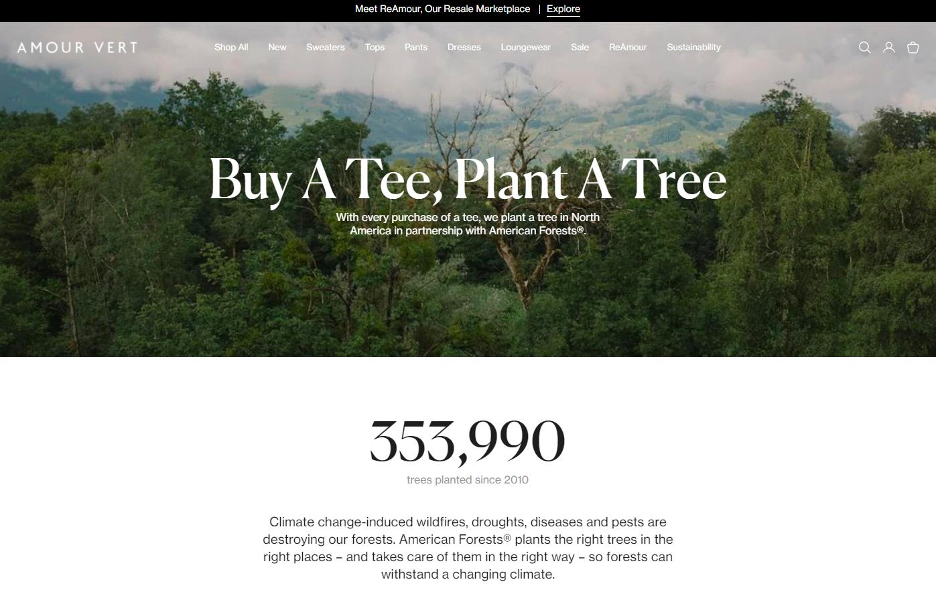
10. Bundling
A bundle discount covers a set of items that fit together. Buying all of them at once is cheaper than buying each of them separately.
For example, a bundle of razors, shaving cream, and aftershave makes a lot of sense, since you need all these items for facial hair upkeep.
Here’s an example from Kylie Skin:
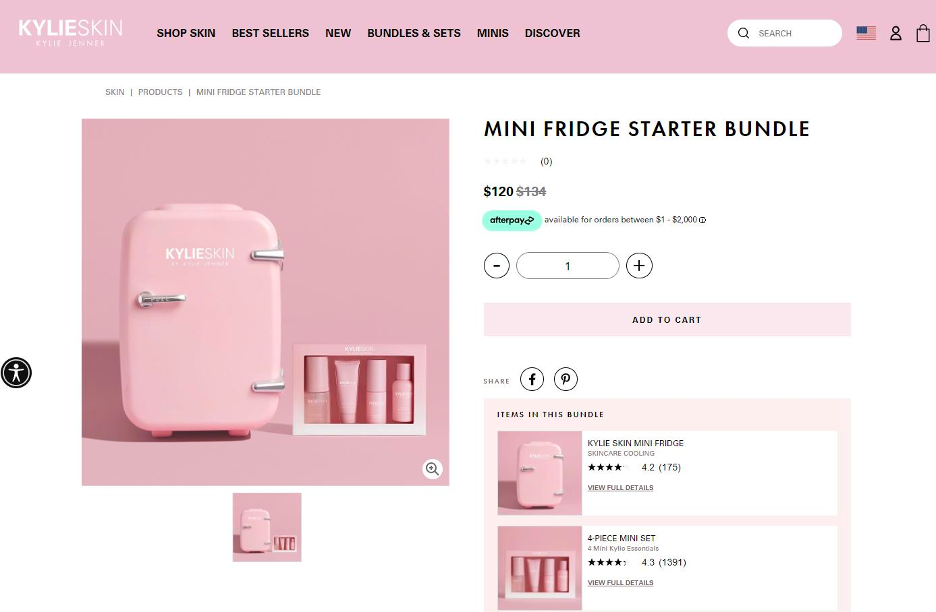
12 tactics to make discounts work better
Now that we’ve seen the most popular types of discounts, let’s see how you can make your discount codes work even better.
Here are some practical tips for improving your sales results.
1. Make your discounts feel special
It’s important to make your discounts feel like a special occasion, even if they are not.
That means you always need to have a reason. Whether it’s the end of summer, you’re passing on some savings on your supplies, or it’s your dog’s birthday… always be sure to announce WHY you’re discounting.
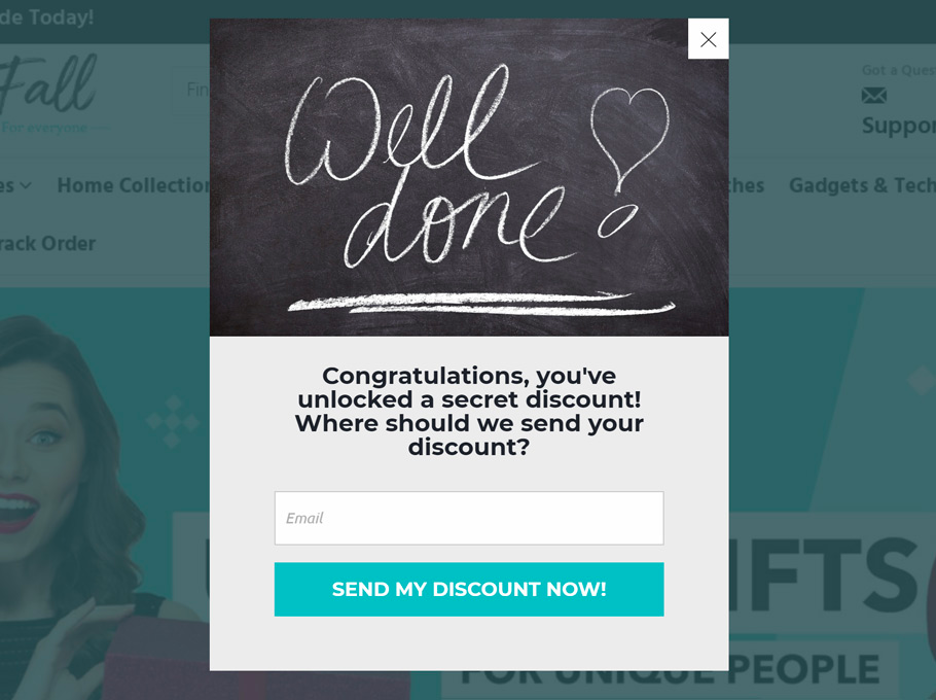
2. Have a deadline
Deadlines help increase the persuasiveness of your discount offer by increasing urgency and Fear Of Missing Out (FOMO). Adding a countdown timer can motivate shoppers to make a decision sooner (even immediately).
Another version of this same principle is tying the end of your discounts to seasonal events like Black Friday and Christmas.
The popup below promotes a giveaway that ends on Halloween.
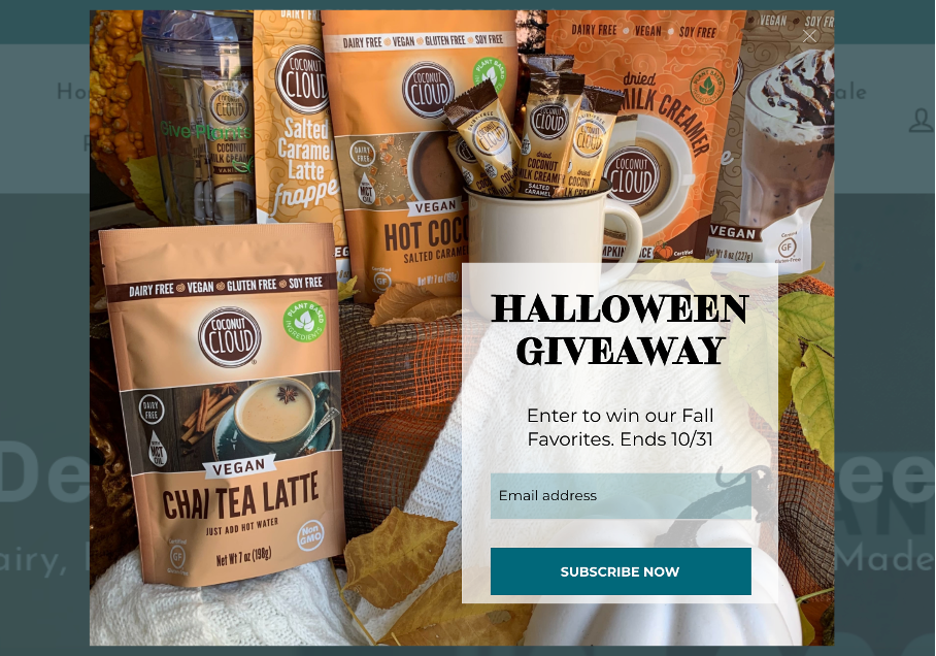
Extra-short duration discounts are all about scarcity and the ticking clock.
They’re effective at generating short-term wins with metrics like increased traffic, conversion rates, and revenue.
You can also use extra-short duration discounts to stop cart abandoners. The popup below even has a countdown timer, which is a great example of a limited-time offer.
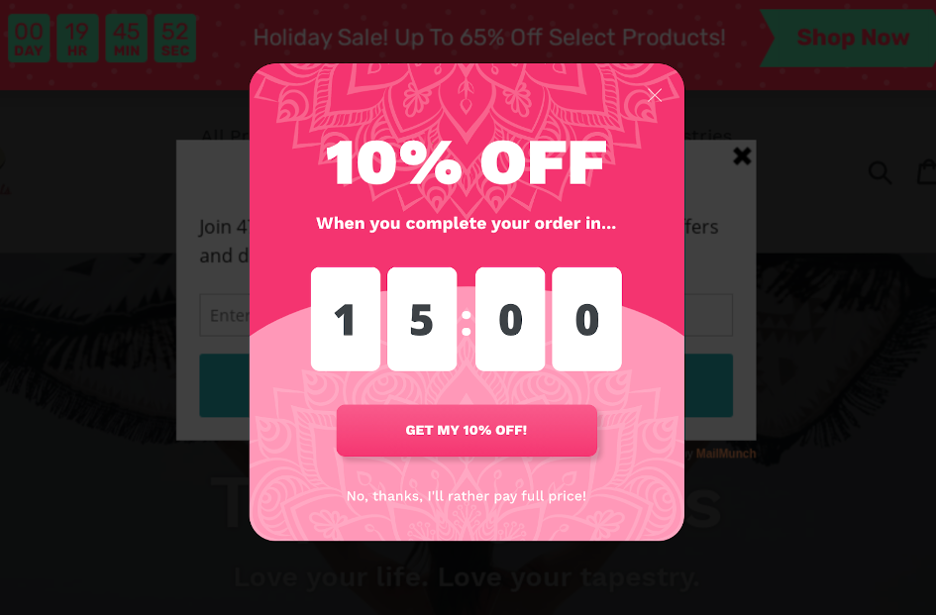
3. Fixed amount vs percentage
The rule of 100 states that buyers respond better to percentage discounts (e.g. “20% off”) for items under $100, and they prefer seeing absolute values (e.g. “Save $20”) when items are over $100.
So the price points of your products and average cart value will tell you whether to offer percentage discounts or absolute value discounts.
But if you have doubts, you can A/B test both versions like BootCuffsSocks did:

4. Randomized coupon codes
Customers are used to fixed coupon codes like “10OFF.” And it gives them the impression that the coupon code will still work months from now.
On the other hand, a randomized code (like “AX6S7”) is temporary and easier to lose. This helps increase the sense of urgency.
You can also use randomized coupon codes to keep track of whether individuals have used them or not. And if they haven’t, you know who to send follow-up emails to.
Here’s how you can set up automatically generated coupon codes with OptiMonk:
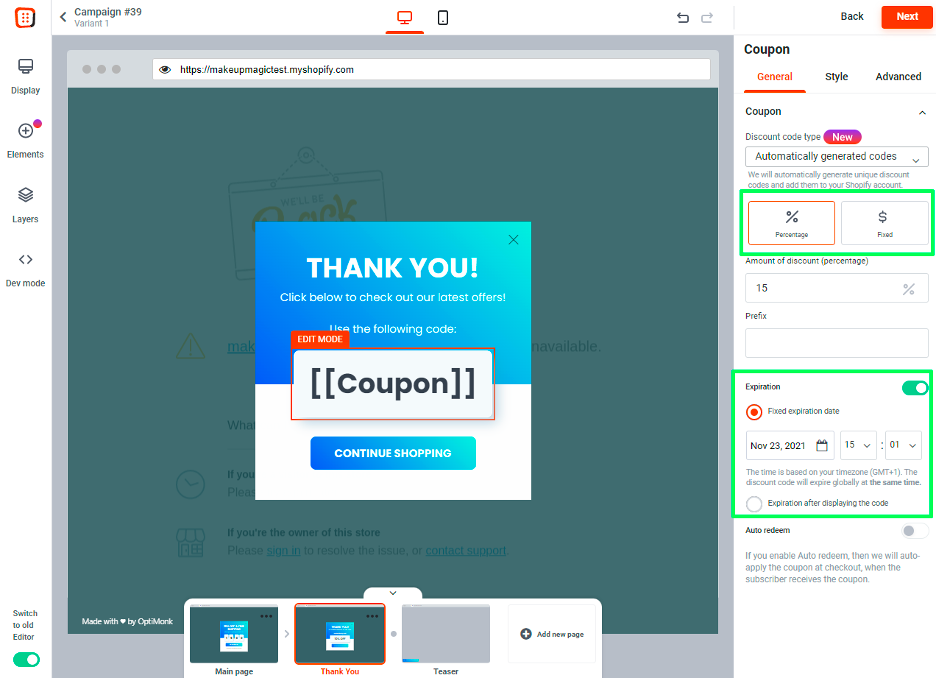
5. Offer discounts based on segments
You need to differentiate visitors based on their traffic sources because they’re in different awareness stages of their customer journey.
For example, if a visitor comes from a Google search with the intent to buy, you shouldn’t offer them a huge discount because they’re already interested in purchasing your products.
But someone who arrives from Facebook or Instagram is likely just curious and looking around. You’ll probably have to offer them a bigger discount to convince them to buy.
6. Automatic coupon redeem
OptiMonk has an auto-redeem function that automatically applies your visitors’ coupon codes at the checkout. This way, customers won’t forget about their coupons and can enjoy seeing that enticing discount on the checkout screen.
Here’s how to set it up:
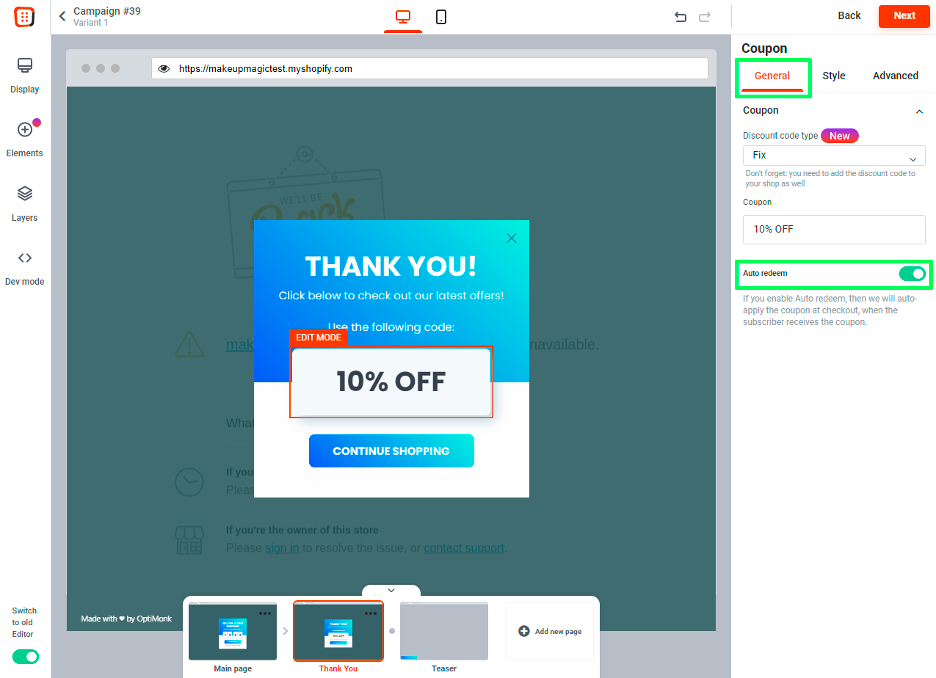
7. Keep reminding users
It’s always a good idea to keep a potential customer’s discount in view through the entire purchase journey.
You don’t ever want your customers to be confused about whether the price they’re looking at is the original or the discounted price.
Using a follow-up sticky bar is a surefire method to remind your visitors that there’s a discount waiting for them at the checkout.

Here’s another example that also includes a countdown timer:
8. Gamify your discounts
Gamification gives shoppers a chance to win a discount rather than just getting a discount. This will increase your conversion rate because it’s fun for your visitors.
With a lucky wheel, for example, you can show multiple discount options (from 5% off to 50% off). Your visitors will probably want to try their luck once they see the maximum discount. However, if they don’t get a 50% off, they’ll still be happy to win a smaller discount.
The price of a spin is entering their email addresses, so gamified discounts are also a great solution to help you grow your list.
(Extra tip: With OptiMonk, the chance of winning each discount is totally up to you.)
9. Make your customers earn it
Customers will particularly appreciate discounts that they’ve earned.
For example, when you offer a discount in exchange for feedback, customers will feel like the reward is a “thank you” for something nice they’ve done. It’s a great way to encourage first-time customers to become loyal customers.
Here’s another example of how you make your customers to earn your special offers:
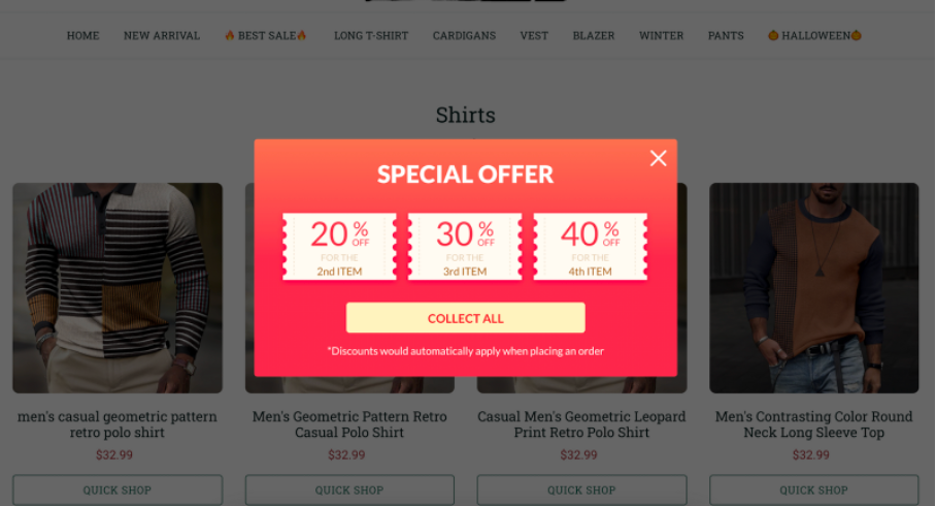
10. Personalize based on traffic source
You can personalize your discount codes based on traffic sources so your offer is more exclusive.
Studies say that personalized discounts increase revenues by 5%–15%.
Check out this example, where an ecommerce brand gives 20% off to visitors coming from the Forbes website.
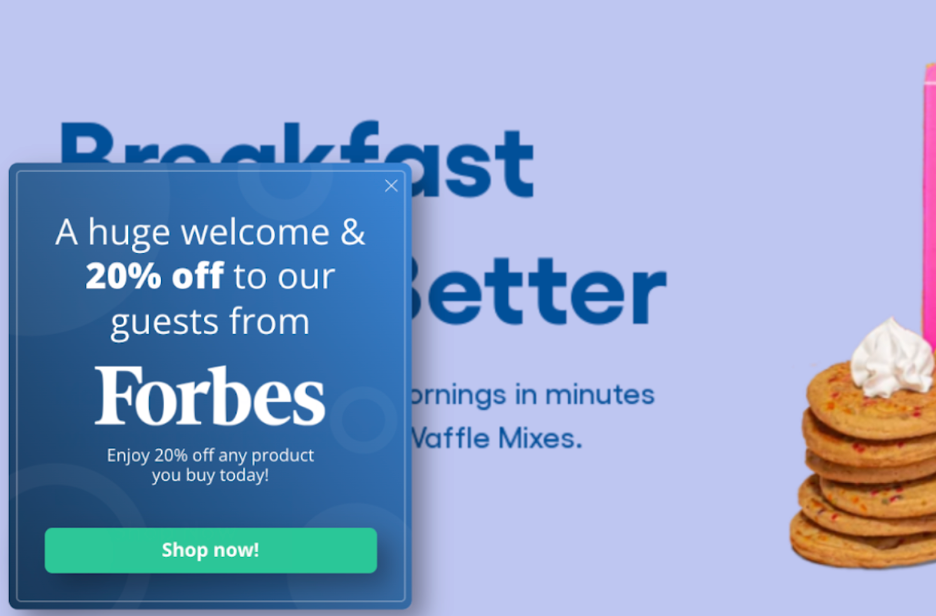
11. Influencer-based discounts
If you work with influencers, you can personalize your discounts based on who directed a visitor to your website. You can even add an image of that influencer to make it more personal.
Check out how Blendjet does it:
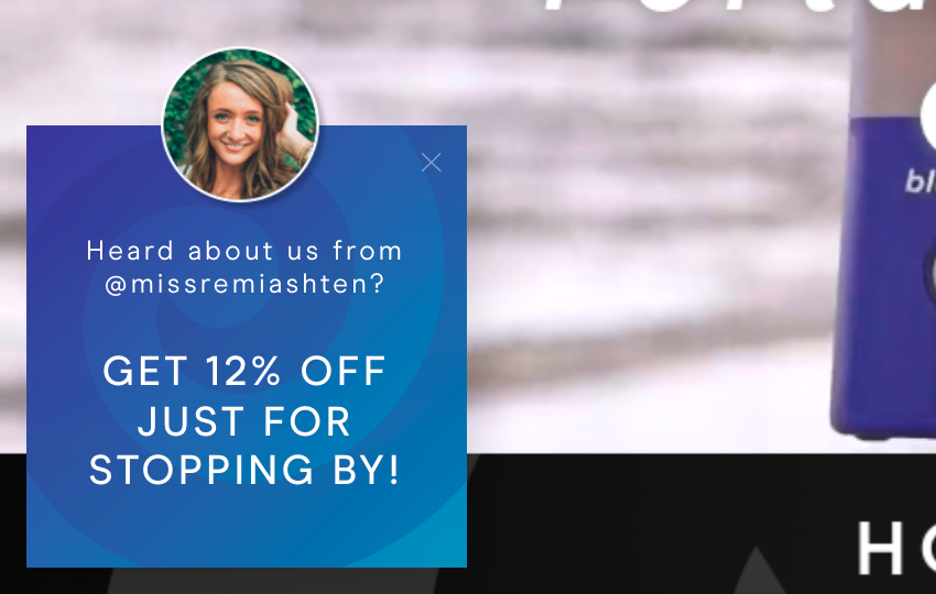
12. Gradually decrease your discounts
Starting a promotion with a higher discount and gradually lowering the level of discount really ramps up the sense of urgency because they don’t want to miss out on the best deals. You’re effectively creating a race to save the most money among your customers.
Surf brand Rusty used this kind of sale for a one-day sitewide promotion. It offered 10 coupons for 50% off, 20 coupons for 40%, 30 coupons for 30% off, and 50 coupons for 20%.
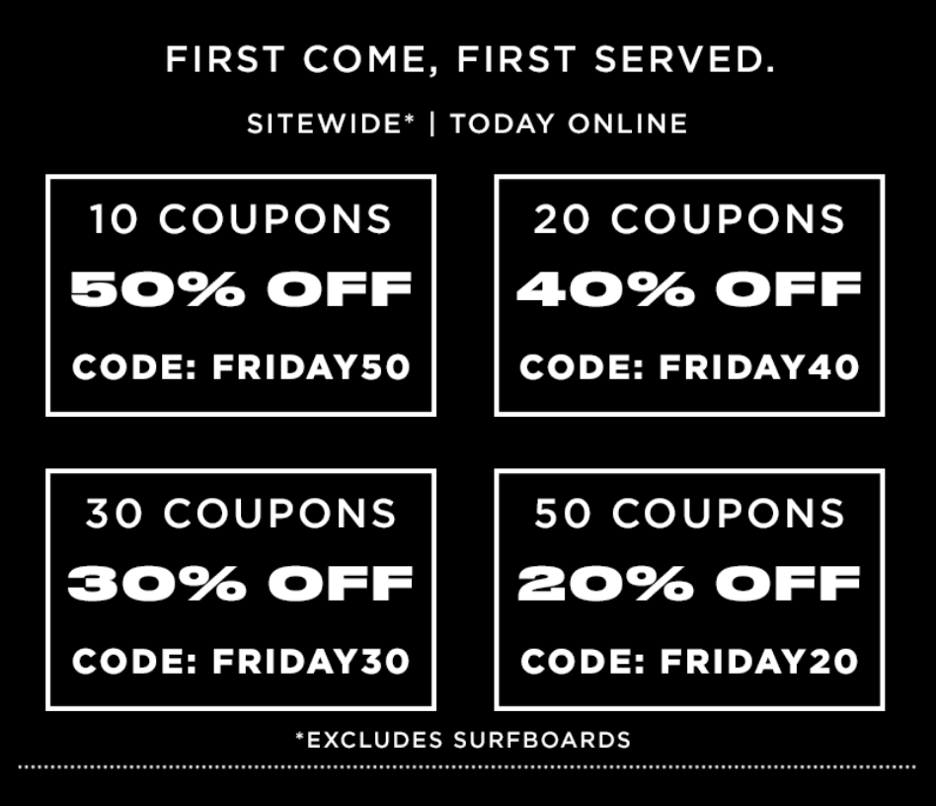
4 tips to compete against discount pricing
Now let’s see what you can do if you don’t want to offer too many discounts.
1. Offer non-monetary incentives for low-intent visitors
It’s better not to convince your visitors to purchase with a discount if they’re still deciding whether they want to buy your products or not.
Rather, you should try to help them in their quest to find a solution to their problem.
This way, customers won’t feel pressured to buy a product they’re unfamiliar with. They’ll be happy to receive educational resources like an ebook or the chance to take a quiz since these help them learn more about potential solutions.
If a customer is interested in learning more, they may join your email marketing list. And just like that, you’ve got a highly valuable lead that you can nurture.
Here are some great examples:

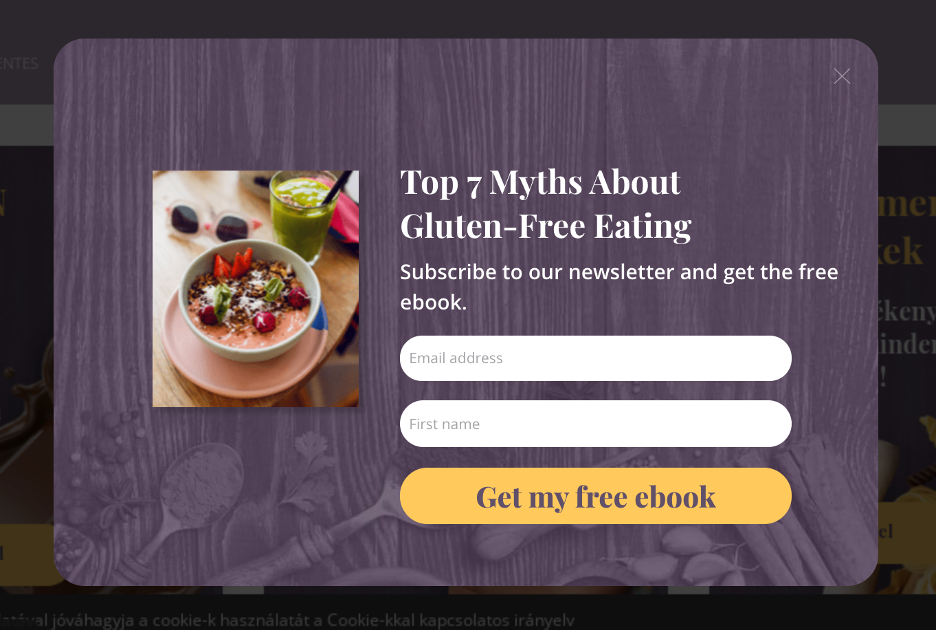
Customer Value Optimization (CVO) will help you create the perfect message for each stage of the customer journey and maximize the lifetime value of all your customers by building lasting relationships with them. Read our guide to learn more about CVO.
2. Highlight your value proposition
What differentiates your brand? Putting the price aside, why is buying from you the best choice?
The answer to these questions should be front and center in your discount messaging.
If your competitors use lowball tactics, you don’t have to automatically drop your prices too. Instead, you could make the argument that “a lower price doesn’t always mean the best value.”
Check out these popup examples where they highlight their value propositions clearly:

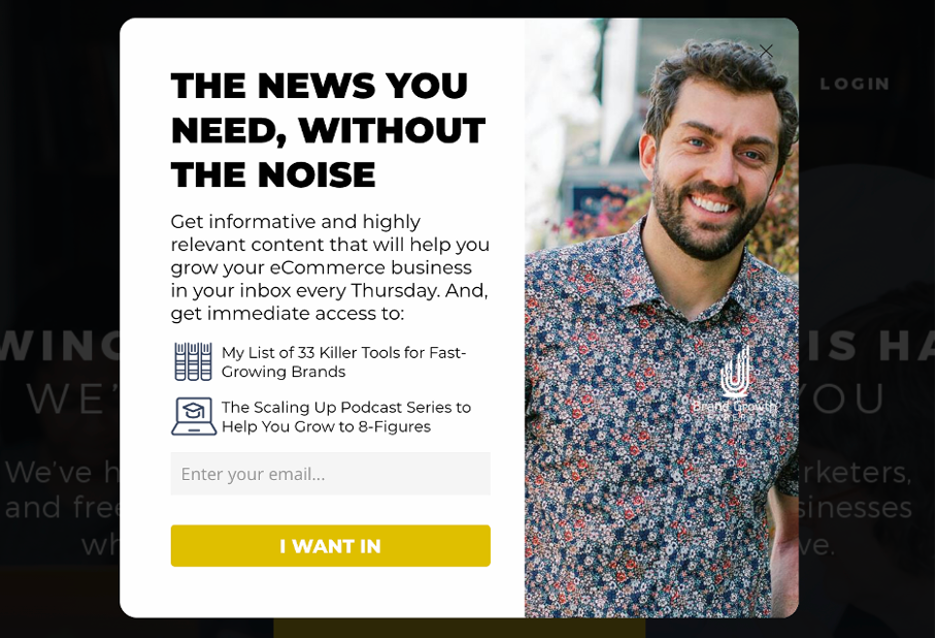
3. Use “limited quantity” messages
Although limited-time discounts are the most common method of triggering FOMO, there are other options.
You can also highlight that you only have limited quantities of a product remaining, which creates the perception that your products are in huge demand.
BestBuy also promotes that the “Deal of the Day” only has limited quantities:
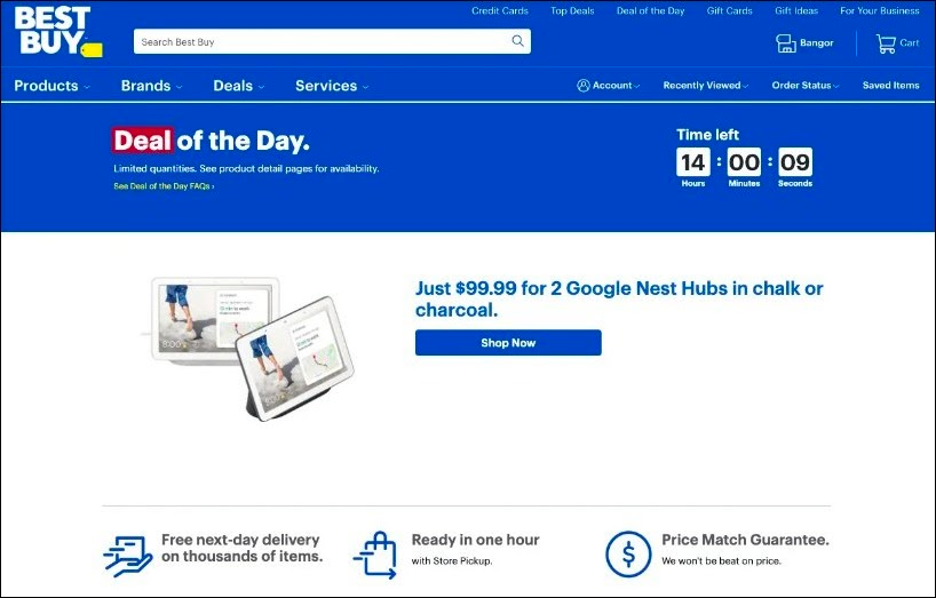
4. Offer money-back guarantees
All ecommerce businesses face the same problem: customers can’t see and touch the products. This is one of the biggest barriers in the ecommerce space.
A money-back guarantee is a great way to address this issue since it gives potential customers a chance to try out the product with little to no risk. Moreover, your shoppers will see that you truly believe in the quality of your products.
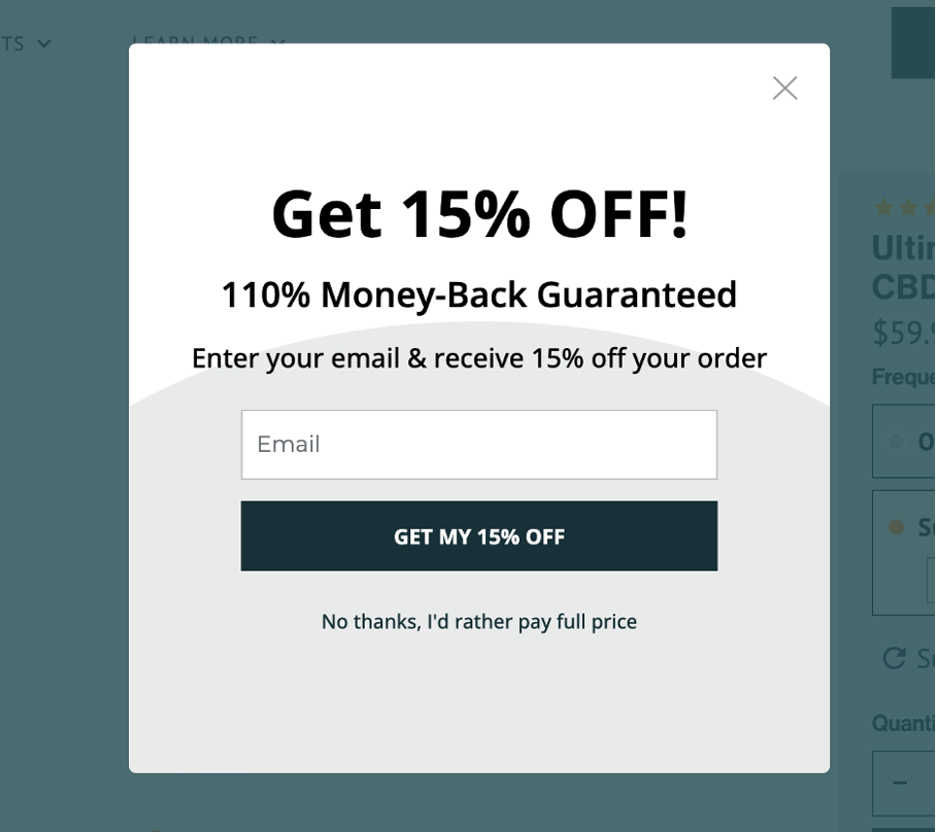
FAQ
What is a discount pricing strategy?
A discount pricing strategy involves offering products or services at lower prices to attract customers and drive sales. It can be a temporary promotion or a permanent pricing strategy aimed at capturing market share or encouraging repeat purchases.
Is offering discounted prices a good marketing strategy?
It depends on various factors including your business goals, target market, and product or service positioning. Discounts can be an effective tool for attracting more customers, increasing sales volume, clearing excess inventory, and fostering customer loyalty. However, over-reliance on discounts can devalue your brand and erode profit margins if not implemented strategically.
What type of discount is the most effective to increase sales?
The effectiveness of discounts depends on your specific business circumstances and objectives. Common discount types include percentage discounts, dollar discounts, volume discounts, bundle discounts, seasonal discounts, and loyalty discounts. Experimentation and understanding your customer preferences and buying behaviors are crucial in determining which type of discount will yield the best results to achieve your sales targets.
Summing up
It’s an understatement to say that discounts are important for ecommerce. But it doesn’t mean that you can offer huge percentage discounts willy-nilly.
Excessive and constant discounts can damage brands. But you can avoid this with a clear pricing strategy. The key is to offer the right discount at the right time. Use the best practices that you learned today to optimize your results.
All of the tips mentioned in this article can be executed with OptiMonk popups. You can create a free OptiMonk account here in a matter of minutes and give your new discount strategies a try.
Migration has never been easier
We made switching a no-brainer with our free, white-glove onboarding service so you can get started in the blink of an eye.

What should you do next?
Thanks for reading till the end. Here are 4 ways we can help you grow your business:
Boost conversions with proven use cases
Explore our Use Case Library, filled with actionable personalization examples and step-by-step guides to unlock your website's full potential. Check out Use Case Library
Create a free OptiMonk account
Create a free OptiMonk account and easily get started with popups and conversion rate optimization. Get OptiMonk free
Get advice from a CRO expert
Schedule a personalized discovery call with one of our experts to explore how OptiMonk can help you grow your business. Book a demo
Join our weekly newsletter
Real CRO insights & marketing tips. No fluff. Straight to your inbox. Subscribe now
Csaba Zajdo
- Posted in
- Ecommerce
Partner with us
- © OptiMonk. All rights reserved!
- Terms of Use
- Privacy Policy
- Cookie Policy
Product updates: January Release 2025








